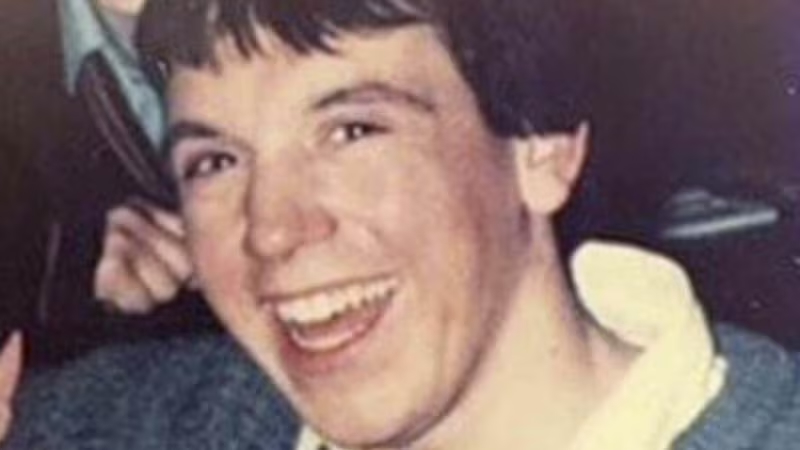
The brother of a County Derry man shot dead in an SAS ‘shoot-to-kill’ targeted attack has told an inquest that shortly before he was killed, the Crown police said he would be dead before he was 21.
A month before he was due to turn 21, Francis Bradley was shot dead near Toome in February 1986.
In his evidence, Mr Bradley recalled how his brother had been arrested several times before his death and met with a priest after the RUC tried to recruit him as an informer.
“I recall that after Francis was released from police custody that he was very nervous,” he said.
“Once he went to Fr Denis Faul in County Tyrone and told him that the RUC had asked him to become an informer.”
He explained how the RUC advised on the best way to pass on information to avoid detection but that his brother had “refused to become an informer”.
“Francis said that police had told him that he would be dead before he was 21 years old,” Mr Bradley told the court.
“Even though I was very young I myself was aware that Francis was feeling very fearful.”
Mr Bradley told the court that during a particular raid on his family home, armed RUC police were “aggressive” and “wrecked” the house during searches.
He also told how a police dog killed sheep on his father’s land as his mother looked on, and confirmed his father, who died last year, later successfully sued the RUC.
A former SAS soldier, known as ‘Soldier V’ also gave evidence at the inquest using voice distortion equipment.
In a statement read to the court, the former British soldier said he spent about seven years “on active service” in the north. He confirmed that on the night of the ambush he was the officer-in-command of a surveillance sub-unit and was deployed in the area of the ambush in a vehicle on his own.
He revealed that members of the Provisional IRA in south Derry were the focus of a long-running surveillance operation at the time of Mr Bradley’s killing.
Soldier V said he could not recall the names of those involved “due to the passage of time”.
“It was within this operation that Mr Bradley was killed,” he said.
In his statement he referred to a British army video that may have shown the moment Mr Bradley was killed.
The video images were captured by a thermal imaging type device, known as a P3, which was fitted to a British army helicopter on the night of the ambush.
The British Army has claimed the video no longer exists.
The former soldier made reference to a former senior Special Branch officer, Frank Murray, who has since died.
Mr Murray was involved in several controversial incidents during the conflict.
“As we were acting in support of the police, and I am told Frank Murray was present in at least one of the operation rooms, it may be that the police recovered or viewed the video,” Soldier V said in his statement.
“I do not know. The police would have been aware of the existence of any video as all assets were deployed under police tasking.”
The British Ministry of Defence (MoD) was then challenged to clarify when it became aware of the video.
Karen Quinlivan KC, who acts for the Bradley family, raised concerns about when the British military became aware of the video’s existence.
During the hearing the coroner said the “first time I was ever made aware of this was on Thursday morning and in fact hadn’t even read this statement or seen this statement”.
Ms Quinlivan added that several parties to the inquest are in a similar position.
“I think we are all in the same position bar the MoD,” she said.
The coroner said the existence of the video may prove “fundamental” in an inquest into the killing.
Fearghál Shiels, of Madden and Finucane Solicitors, is representing the Bradley family and said many questions needed answered.
“Obviously this has come as a complete surprise, we’re about to begin the seventh week of evidence and this demands an explanation as to why it has only come to light now,” he said.
“This is despite assurances that everything has been disclosed to the inquest.”
Mr Shiels was asked whether this could be a tactic to run down the clock, just weeks before the cut-off date for legacy proceedings. Under sweeping cover-up legislation, all inquests are due to shut down on May 1st.
“I don’t think that can be allowed. The coroner will have received all the oral evidence available to them,” he said.
“I don’t think anything introduced this late in the proceedings will be allowed to be held up as a stumbling block.”
Even if such a tape had not been preserved, he said other evidence relating to it may be available.
“If it no longer exists, there should be a paper trail. There should be retention and disposal records, all of that needs to be explained by the MoD.
“If there’s time, it could be that a witness needs to be called. But it won’t operate as an obstacle to the inquest.”
![[Irish Republican News]](https://republican-news.org/graphics/title_gifs/rn.gif)
![[Irish Republican News]](https://republican-news.org/graphics/title_gifs/harp.gif)

